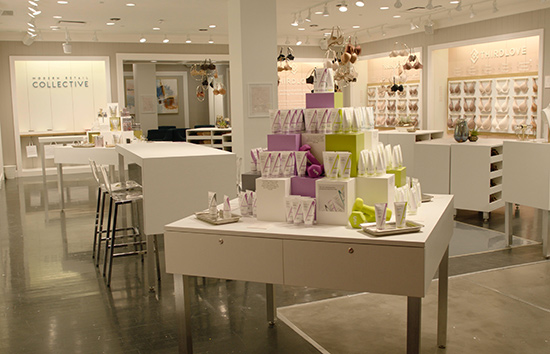咨询巨头麦肯锡跨界开设零售店

|
在实体店面不断关闭的零售业大潮之中,一家令人意想不到的公司进入了这个行业,并开始逆流而上,它就是麦肯锡(McKinsey & Co)。 这家老字号精英咨询公司在9月26日表示,公司旗下的首家零售店Modern Retail Collective将于9月底在明尼阿波利斯的美国商城(Mall of America)正式开张。 在这里,你买不到麦肯锡标志性的公司报告,也无法得到咨询服务。实际上,来访的消费者几乎感觉不到它背后的支持者是麦肯锡。 正相反,消费者看到的将是3,000平方英尺的生活用品零售实验室。这里原本是Abercrombie & Fitch的儿童店,如今会定期轮换不同品牌的产品,并采用了一系列新型零售技术。此举的目的是让麦肯锡的客户了解哪种技术能够吸引消费者进入门店,购物时消费更多,在店内停留的时间更长。门店也会调查哪些技术未能取得成功,并会提供智能镜子和所谓的热点(可以在店内的特定地点提供数字服务)等流行工具,还支持加密货币支付。 门店第一批进驻的品牌包括珠宝商Kendra Scott、文胸厂商ThirdLove、体香剂厂商Type:A和美妆公司Elevé Cosmetics。以Kendra Scott为例,其中评估的一项技术可以让消费者在定制手链上镶嵌各种石头,并虚拟地“看到”不同配置下产品的样式。 计划利用麦肯锡的门店构建测试案例的第一批技术供应商包括RetailNext、Zebra Technologies和微软(Microsoft)。 许多品牌在向公众推出技术之前,已经在实验室进行过测试。麦肯锡开设门店,就是为了更快地看到真实环境下的技术效果。对于那些考虑实体门店或快闪店却尚不具备条件的小型数字化本土品牌而言,这尤其提供了方便。 麦肯锡亚特兰大办公室的合伙人蒂凡尼·伯恩斯表示:“客户希望掌握更多面向消费者的信息。很多技术是无法模拟的。”尽管麦肯锡的品牌在店内隐形,但公司会收集有助于向客户提供建议的数据。 麦肯锡计划至少维持这家门店一年时间,并且每隔几个月就轮换一批品牌和技术供应商。公司希望这种节奏可以让它评估有助于在亚马逊(Amazon)时代武装零售商,并(依照麦肯锡客户的希望)将浏览者转化为购买者的一系列技术。 麦肯锡的合伙人普拉文·阿提表示:“让每件产品都变成智能产品是一种途径。客户可以弄清楚:那些技术消费者在意吗,能推动转型吗?”(财富中文网)
译者:严匡正 |
In an endless wave of brick-and-mortar store closings, one unexpected new entrant is swimming against the retail industry tide: McKinsey & Co. The white shoe consulting firm said on September 26 it was opening its first ever retail store, called the Modern Retail Collective, the end of September at the Mall of America in Minneapolis. It won’t be a place to buy McKinsey’s signature corporate reports or pop in to get consulting services. In fact, shoppers visiting will have no inkling that McKinsey is behind the space at all. Instead, shoppers will explore a 3,000 square-foot living retail lab (in a space once occupied by an Abercrombie & Fitch kids store) that will feature a regular rotation of different brands using an array of new retail tech. The goal is to allow McKinsey clients to see which technology compels customers to enter a store, shell out more money when they do shop, and stay longer. The space will also investigate which technologies flop, and may include trendy tools like smart mirrors or so-called hotspots, which offer digital services in specific locations within a store. It will accept cryptocurrency as payment, too. The store’s first cohort includes up-and-coming brands like jeweler Kendra Scott, bra-maker ThirdLove, Type:A deodorant and Elevé Cosmetics. In the case of Kendra Scott, one technology under evaluation would allow a customer to use different stones to assemble a personalized bracelet and virtually “see” what the product would look like in various configurations. The first group of tech providers that intend to use McKinsey’s store to build test cases include RetailNext, Zebra Technologies, and Microsoft. Many brands test technology in labs before rolling it out to the public. The idea behind McKinsey’s store is to sooner see how tech works in a real-life setting—a particular boon for smaller, digitally native brands that are considering physical stores or pop-ups but don’t yet have them. “Clients wanted more customer facing information. A lot of technology, you can’t simulate,” Tiffany Burns, a partner in McKinsey’s Atlanta office, tells Fortune. While McKinsey’s brand will be invisible in the store, the company will gather data that it hopes will help it advise clients. McKinsey, which plans to operate the store for at least a year, expects to rotate each cohort of brands and tech providers every few months. The company hopes that cadence will allow it to evaluate a spectrum of technology that promises to fortify retailers in the Amazon era and, McKinsey’s clients hope, turn browsers into buyers. “It’s a way to have every product become a smart product,” says McKinsey partner Praveen Adhi. “They can understand: Does the customer care about that? And does that drive the conversion?” |













